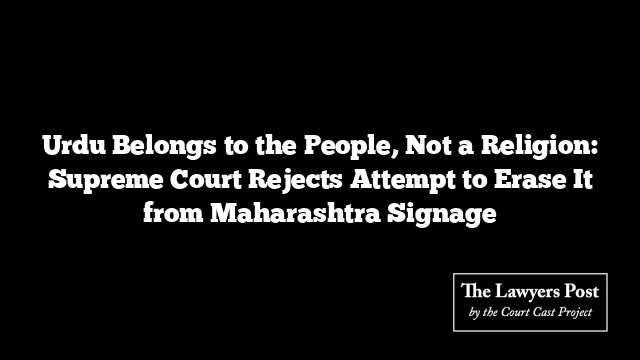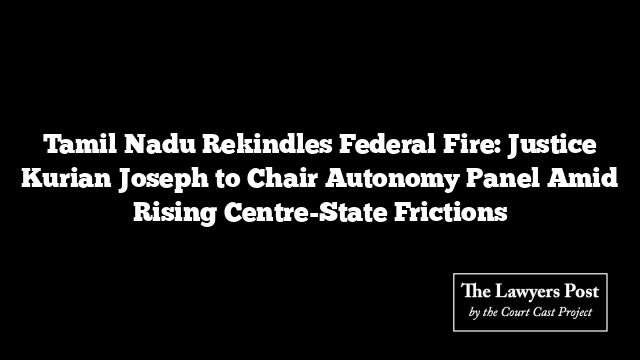In a strong affirmation of India’s linguistic and cultural plurality, the Supreme Court on Tuesday brushed aside a petition seeking to strip Urdu from a municipal signboard in Maharashtra, declaring unequivocally that Urdu is a language of the land—not a religion.
The challenge, brought by a former councillor of Patur town, had objected to the use of Urdu on the nameboard of the Patur Municipal Council. But the country’s highest court wasn’t having it.
A Bench led by Justices Sudhanshu Dhulia and K Vinod Chandran dismantled the foundation of the petition, asserting that Urdu and Marathi stand on equal footing within India’s constitutional framework. The notion that only Marathi could be used was dismissed as “misguided” and “legally unsound.”
What followed was more than just a legal pronouncement—it was a reflection on history, culture, and misplaced prejudice. The Court lamented how colonial powers had driven a wedge between Hindi and Urdu, weaponizing language to divide. The bench called it a “pitiable digression from reality,” rejecting the false equivalence between language and religion.
“Urdu was born in India,” the judgement stated plainly. “Like Marathi and Hindi, it is an Indo-Aryan language. It emerged not in isolation but out of cultural necessity—people needing to talk, to trade, to share poetry, stories, and ideas.”
The petitioner had argued that the use of Urdu violated the Maharashtra Local Authorities (Official Languages) Act, 2022. The Court made quick work of that claim, noting there is no statutory prohibition against Urdu—and in fact, the Act doesn’t bar the inclusion of any language alongside Marathi.
The judgment was rich in cultural and historical awareness. The justices described Urdu as a mirror to India’s “ganga-jamuni tahzeeb”—a term capturing the spirit of syncretic coexistence in the heartland. Language, the Court said, does not worship gods or belong to temples or mosques. “Language is culture. Language is the soul of a people.”
It also reminded the petitioner—and the country—that Urdu is woven deeply into the nation’s legal system itself. Courtroom terms from adalat to halafnama to peshi draw directly from Urdu. “Its influence is not foreign—it is foundational,” the bench noted.
The practical roots of the case were also examined. Urdu had been used on Patur’s municipal signage since 1956. The Court pointed out that this was not a sudden insertion but a long-standing practice that served a multilingual community. It wasn’t politics; it was public service.
Significantly, the Court flagged a procedural flaw in the petition: it hadn’t been filed by the Chief Officer of the Council, who is the only person empowered to raise such an objection under the Maharashtra Municipal Councils Act. Instead, it was brought by a councillor with no legal standing on the issue.
Language, the Court emphasized, is not a battlefield. “If people in the area understand Urdu, there is no reason to keep it off a signboard. Communication must not become a casualty of misplaced cultural insecurities.”
The verdict concluded with a call to action—not in the courtroom, but in the national conscience. “Our strength lies in our diversity. Our misconceptions, even prejudices, must be challenged with truth. Let us make friends with every language, Urdu included.”
The legal chapter is closed. But the message is wide open: No language, born of this land, needs to justify its existence.





